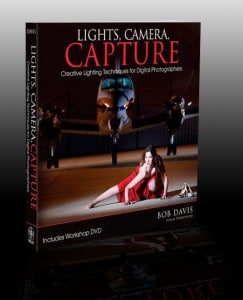This Post has been updated for accuracy, you may read on for historical purposes…
 I have recently jumped into the world of lighting photography. While I have done some of this in the past, a series of recent photography events has forced me in the direction of studio lighting. Studio lighting is a scary thing and no matter what you read or how many Kelby Training courses you watch, nothing can prepare you for the trials and tribulations you will be confronted with during an event.
I have recently jumped into the world of lighting photography. While I have done some of this in the past, a series of recent photography events has forced me in the direction of studio lighting. Studio lighting is a scary thing and no matter what you read or how many Kelby Training courses you watch, nothing can prepare you for the trials and tribulations you will be confronted with during an event.
“Lights, Camera, Capture” by Bob Davis is great reading material for your lighting preparation. The diagrams that go with each picture in the book are an immense help in understanding how light works. I never felt it before or understood it, but after a few pages I am starting to realize light is a very organic thing. It wraps around objects, bounces off of everything, and with a little bit of practice it can be controlled. While Bob’s pictures and diagrams are unparalleled to any other lighting book I have read, his writing style is pretty bad. There are a lot of typos, but I can read through those as the content is pretty damn good.
How does this relate to HDR images? Light, that is how! The dynamic range of an image is directly related to the light illuminating it. Understanding how light works will, in turn, make your HDR photographs much better!








